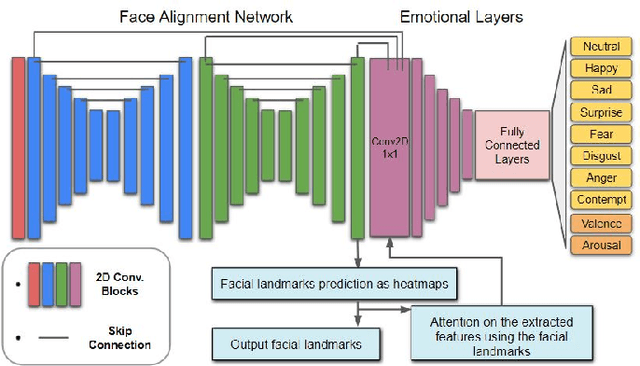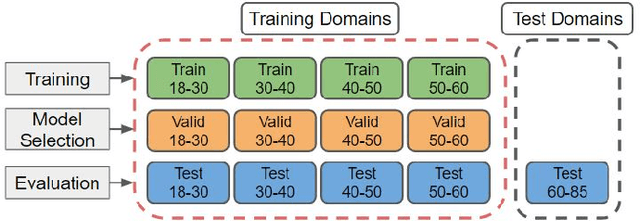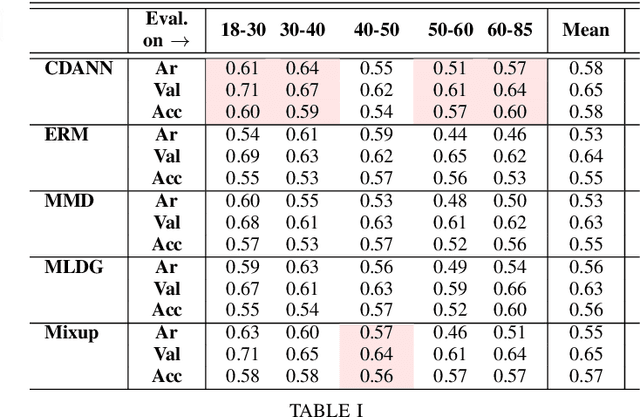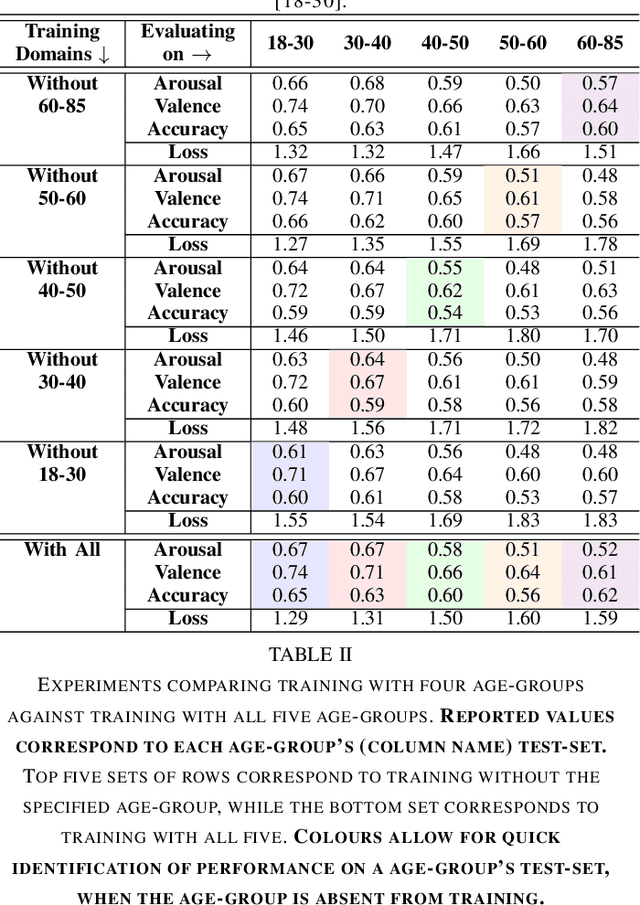Yujiang Wang
Efficient Task Grouping Through Samplewise Optimisation Landscape Analysis
Dec 05, 2024Abstract:Shared training approaches, such as multi-task learning (MTL) and gradient-based meta-learning, are widely used in various machine learning applications, but they often suffer from negative transfer, leading to performance degradation in specific tasks. While several optimisation techniques have been developed to mitigate this issue for pre-selected task cohorts, identifying optimal task combinations for joint learning - known as task grouping - remains underexplored and computationally challenging due to the exponential growth in task combinations and the need for extensive training and evaluation cycles. This paper introduces an efficient task grouping framework designed to reduce these overwhelming computational demands of the existing methods. The proposed framework infers pairwise task similarities through a sample-wise optimisation landscape analysis, eliminating the need for the shared model training required to infer task similarities in existing methods. With task similarities acquired, a graph-based clustering algorithm is employed to pinpoint near-optimal task groups, providing an approximate yet efficient and effective solution to the originally NP-hard problem. Empirical assessments conducted on 8 different datasets highlight the effectiveness of the proposed framework, revealing a five-fold speed enhancement compared to previous state-of-the-art methods. Moreover, the framework consistently demonstrates comparable performance, confirming its remarkable efficiency and effectiveness in task grouping.
Train Faster, Perform Better: Modular Adaptive Training in Over-Parameterized Models
May 13, 2024Abstract:Despite their prevalence in deep-learning communities, over-parameterized models convey high demands of computational costs for proper training. This work studies the fine-grained, modular-level learning dynamics of over-parameterized models to attain a more efficient and fruitful training strategy. Empirical evidence reveals that when scaling down into network modules, such as heads in self-attention models, we can observe varying learning patterns implicitly associated with each module's trainability. To describe such modular-level learning capabilities, we introduce a novel concept dubbed modular neural tangent kernel (mNTK), and we demonstrate that the quality of a module's learning is tightly associated with its mNTK's principal eigenvalue $\lambda_{\max}$. A large $\lambda_{\max}$ indicates that the module learns features with better convergence, while those miniature ones may impact generalization negatively. Inspired by the discovery, we propose a novel training strategy termed Modular Adaptive Training (MAT) to update those modules with their $\lambda_{\max}$ exceeding a dynamic threshold selectively, concentrating the model on learning common features and ignoring those inconsistent ones. Unlike most existing training schemes with a complete BP cycle across all network modules, MAT can significantly save computations by its partially-updating strategy and can further improve performance. Experiments show that MAT nearly halves the computational cost of model training and outperforms the accuracy of baselines.
Data Encoding For Healthcare Data Democratisation and Information Leakage Prevention
May 05, 2023Abstract:The lack of data democratization and information leakage from trained models hinder the development and acceptance of robust deep learning-based healthcare solutions. This paper argues that irreversible data encoding can provide an effective solution to achieve data democratization without violating the privacy constraints imposed on healthcare data and clinical models. An ideal encoding framework transforms the data into a new space where it is imperceptible to a manual or computational inspection. However, encoded data should preserve the semantics of the original data such that deep learning models can be trained effectively. This paper hypothesizes the characteristics of the desired encoding framework and then exploits random projections and random quantum encoding to realize this framework for dense and longitudinal or time-series data. Experimental evaluation highlights that models trained on encoded time-series data effectively uphold the information bottleneck principle and hence, exhibit lesser information leakage from trained models.
Is dataset condensation a silver bullet for healthcare data sharing?
May 05, 2023Abstract:Safeguarding personal information is paramount for healthcare data sharing, a challenging issue without any silver bullet thus far. We study the prospect of a recent deep-learning advent, dataset condensation (DC), in sharing healthcare data for AI research, and the results are promising. The condensed data abstracts original records and irreversibly conceals individual-level knowledge to achieve a bona fide de-identification, which permits free sharing. Moreover, the original deep-learning utilities are well preserved in the condensed data with compressed volume and accelerated model convergences. In PhysioNet-2012, a condensed dataset of 20 samples can orient deep models attaining 80.3% test AUC of mortality prediction (versus 85.8% of 5120 original records), an inspiring discovery generalised to MIMIC-III and Coswara datasets. We also interpret the inhere privacy protections of DC through theoretical analysis and empirical evidence. Dataset condensation opens a new gate to sharing healthcare data for AI research with multiple desirable traits.
Training Strategies for Improved Lip-reading
Sep 03, 2022



Abstract:Several training strategies and temporal models have been recently proposed for isolated word lip-reading in a series of independent works. However, the potential of combining the best strategies and investigating the impact of each of them has not been explored. In this paper, we systematically investigate the performance of state-of-the-art data augmentation approaches, temporal models and other training strategies, like self-distillation and using word boundary indicators. Our results show that Time Masking (TM) is the most important augmentation followed by mixup and Densely-Connected Temporal Convolutional Networks (DC-TCN) are the best temporal model for lip-reading of isolated words. Using self-distillation and word boundary indicators is also beneficial but to a lesser extent. A combination of all the above methods results in a classification accuracy of 93.4%, which is an absolute improvement of 4.6% over the current state-of-the-art performance on the LRW dataset. The performance can be further improved to 94.1% by pre-training on additional datasets. An error analysis of the various training strategies reveals that the performance improves by increasing the classification accuracy of hard-to-recognise words.
Self-supervised Video-centralised Transformer for Video Face Clustering
Mar 24, 2022



Abstract:This paper presents a novel method for face clustering in videos using a video-centralised transformer. Previous works often employed contrastive learning to learn frame-level representation and used average pooling to aggregate the features along the temporal dimension. This approach may not fully capture the complicated video dynamics. In addition, despite the recent progress in video-based contrastive learning, few have attempted to learn a self-supervised clustering-friendly face representation that benefits the video face clustering task. To overcome these limitations, our method employs a transformer to directly learn video-level representations that can better reflect the temporally-varying property of faces in videos, while we also propose a video-centralised self-supervised framework to train the transformer model. We also investigate face clustering in egocentric videos, a fast-emerging field that has not been studied yet in works related to face clustering. To this end, we present and release the first large-scale egocentric video face clustering dataset named EasyCom-Clustering. We evaluate our proposed method on both the widely used Big Bang Theory (BBT) dataset and the new EasyCom-Clustering dataset. Results show the performance of our video-centralised transformer has surpassed all previous state-of-the-art methods on both benchmarks, exhibiting a self-attentive understanding of face videos.
Do Smart Glasses Dream of Sentimental Visions? Deep Emotionship Analysis for Eyewear Devices
Jan 24, 2022



Abstract:Emotion recognition in smart eyewear devices is highly valuable but challenging. One key limitation of previous works is that the expression-related information like facial or eye images is considered as the only emotional evidence. However, emotional status is not isolated; it is tightly associated with people's visual perceptions, especially those sentimental ones. However, little work has examined such associations to better illustrate the cause of different emotions. In this paper, we study the emotionship analysis problem in eyewear systems, an ambitious task that requires not only classifying the user's emotions but also semantically understanding the potential cause of such emotions. To this end, we devise EMOShip, a deep-learning-based eyewear system that can automatically detect the wearer's emotional status and simultaneously analyze its associations with semantic-level visual perceptions. Experimental studies with 20 participants demonstrate that, thanks to the emotionship awareness, EMOShip not only achieves superior emotion recognition accuracy over existing methods (80.2% vs. 69.4%), but also provides a valuable understanding of the cause of emotions. Pilot studies with 20 participants further motivate the potential use of EMOShip to empower emotion-aware applications, such as emotionship self-reflection and emotionship life-logging.
Domain Generalisation for Apparent Emotional Facial Expression Recognition across Age-Groups
Oct 18, 2021



Abstract:Apparent emotional facial expression recognition has attracted a lot of research attention recently. However, the majority of approaches ignore age differences and train a generic model for all ages. In this work, we study the effect of using different age-groups for training apparent emotional facial expression recognition models. To this end, we study Domain Generalisation in the context of apparent emotional facial expression recognition from facial imagery across different age groups. We first compare several domain generalisation algorithms on the basis of out-of-domain-generalisation, and observe that the Class-Conditional Domain-Adversarial Neural Networks (CDANN) algorithm has the best performance. We then study the effect of variety and number of age-groups used during training on generalisation to unseen age-groups and observe that an increase in the number of training age-groups tends to increase the apparent emotional facial expression recognition performance on unseen age-groups. We also show that exclusion of an age-group during training tends to affect more the performance of the neighbouring age groups.
FP-Age: Leveraging Face Parsing Attention for Facial Age Estimation in the Wild
Jun 21, 2021



Abstract:Image-based age estimation aims to predict a person's age from facial images. It is used in a variety of real-world applications. Although end-to-end deep models have achieved impressive results for age estimation on benchmark datasets, their performance in-the-wild still leaves much room for improvement due to the challenges caused by large variations in head pose, facial expressions, and occlusions. To address this issue, we propose a simple yet effective method to explicitly incorporate facial semantics into age estimation, so that the model would learn to correctly focus on the most informative facial components from unaligned facial images regardless of head pose and non-rigid deformation. To this end, we design a face parsing-based network to learn semantic information at different scales and a novel face parsing attention module to leverage these semantic features for age estimation. To evaluate our method on in-the-wild data, we also introduce a new challenging large-scale benchmark called IMDB-Clean. This dataset is created by semi-automatically cleaning the noisy IMDB-WIKI dataset using a constrained clustering method. Through comprehensive experiment on IMDB-Clean and other benchmark datasets, under both intra-dataset and cross-dataset evaluation protocols, we show that our method consistently outperforms all existing age estimation methods and achieves a new state-of-the-art performance. To the best of our knowledge, our work presents the first attempt of leveraging face parsing attention to achieve semantic-aware age estimation, which may be inspiring to other high level facial analysis tasks.
MemX: An Attention-Aware Smart Eyewear System for Personalized Moment Auto-capture
May 03, 2021



Abstract:This work presents MemX: a biologically-inspired attention-aware eyewear system developed with the goal of pursuing the long-awaited vision of a personalized visual Memex. MemX captures human visual attention on the fly, analyzes the salient visual content, and records moments of personal interest in the form of compact video snippets. Accurate attentive scene detection and analysis on resource-constrained platforms is challenging because these tasks are computation and energy intensive. We propose a new temporal visual attention network that unifies human visual attention tracking and salient visual content analysis. Attention tracking focuses computation-intensive video analysis on salient regions, while video analysis makes human attention detection and tracking more accurate. Using the YouTube-VIS dataset and 30 participants, we experimentally show that MemX significantly improves the attention tracking accuracy over the eye-tracking-alone method, while maintaining high system energy efficiency. We have also conducted 11 in-field pilot studies across a range of daily usage scenarios, which demonstrate the feasibility and potential benefits of MemX.
 Add to Chrome
Add to Chrome Add to Firefox
Add to Firefox Add to Edge
Add to Edge